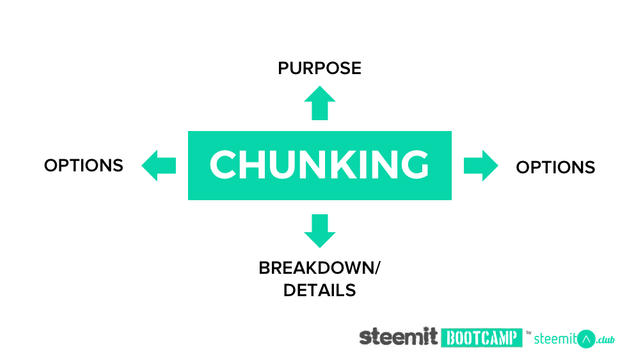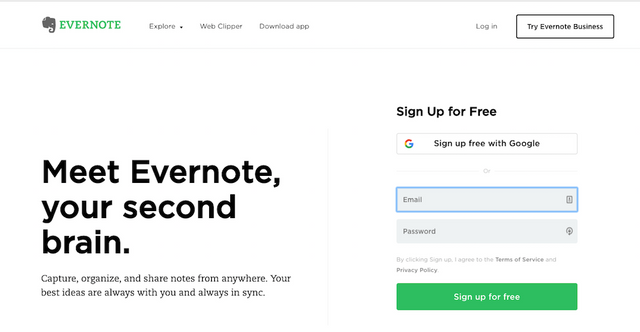How to generate at least 365 post ideas for your Steemit Life (and possibly never run out of ideas again!)
Over the past few months of running Steemit events, workshops and bootcamps, and also interacting with other Steemians, I noticed that there are three main issues most Steemians face:
- What to write about all time time? I’m out of ideas!
- How do I write fluently, engagingly, conversationally?
- How do I grow my followers?
Today, let’s tackle problem number #1, and by the end of the post, even if you were to post every day (I write two posts a day on Steemit, and that’s on top of the contents I produce for my clients regularly), I want to be able to guarantee that you will have enough ideas to last you a year. Yes, that’s 365 post ideas!
But first…
It sounds lame but It need to be said
Before you say something like "Mav, 365 ideas is IMPOSSIBLE!" or "My brain don't work like you", STOP!!!
Here's the lame (but powerful) advice: Believe you can.
Plus, I'm gonna show you the "how".
The Golden Rule to Blogging
One thing successful bloggers and content creators, like the sensational Tim Ferriss, will tell you:
Always write in your areas of interests.
As a matter of fact, the person who is the most eager, most curious, and most interested to read the post, should be you.
Reason is simple: you’re in for the long-haul game, and there will be days when you got hit by a crappy mood swing, and just don’t feel like writing. If you had to write on a topic outside your areas of interest, let me tell you, you will procrastinate, you will drag yourself, you will find distractions, before you decided you’ll just a day off and do it tomorrow. Before you know it, it has been a week.
Ask yourself, if you’re writing on your areas of interest, do you procrastinate about it? Nope! Chances are, the moment you had the idea in your mind, you want to start researching, drafting or even jump straight into writing!
So… what are your areas of interest?
Step 1: Identify Your Interests
One of the easiest way to identify your interest, I found, is by asking yourself a series of questions. A few I usually use in our Steemit Bootcamps are:
- What you used to love doing as a child?
- What will you do all the time if you don’t need to work?
- What does you friend and family member always say you’re good at?
- What books do you like? When you’re at the bookstore (or Amazon), what sections draw you most often?
- What movies do you like? What shows or films that you would excitedly look forward to, with immerse anticipation?
- What are some principles you hold on too over the years?
- Who are your professional heroes? Who are your life heroes?
- What comes easy for you?
- What are some of the newsletters or magazines you subscribe to?
- What are some topics on social media that never fail to bait a click from you?
Come up with at least 5 areas of interest, but don’t let me stop you. The more, the better.
Let's share: Mine are psychology, business fundamentals, entrepreneurship, philosophy, motivation, productivity, marketing, new marketing tech, education, soft-skills (communication, presentation, negotiation etc), leadership, humour, just to name a few.
Step 2: Pick Off Profitable Steemit Tags
This is totally optional, but I believe the data at the tags section of Steemit is a great insight to the general behaviours of the online community. I publish a daily report on the tags with most profitability and highest engagement, like this.
But don’t pick a tag just because it’s profitable. Remember the golden rule? It has to be something you’re already interested in.
Personally, I realised I used the data more to associate my articles with, rather than actually writing based on the tags.
For example, I am writing on wellness, but I realise the wellness tag is not popular nor profitable. Laterally, if I were to chunk sideways (more below), I can instead use tags like health, fitness or even psychology. The key here is to understand how your readers are gonna find your post, so getting into their psyche and understand how they think is crucial. Remember, to you, it may mean one word, but to them, they may have another label for the very same thing.
Step 3: Chunk Up to Determine the Purpose of Your Writing
Ok, from here on, let’s say three of your favourite topic is on “fitness”, “marketing” and “relationships". It’ll be much easier to illustrate some of the concepts here with examples.
Chunking, or rather “The Hierarchy of Ideas”, is a psychological concept I learned from Neuro-Linguistic Programming (NLP). Although most would use it as a communication tool - and boy is it an effective one - I realised I can use it to generate ideas too.
First, let’s look at Chunking Up.
Usually we use Chunking Up to identify the purpose, or to see the bigger picture. A few simple questions for you to ask at this stage are:
- What’s the purpose of my writing this post?
- Why should my readers be reading this post?
- What am I trying to achieve from writing this post?
So, back to our examples:
- Fitness - I want my readers to live happier, healthier lives.
- Marketing - I want my readers to become successful entrepreneurs
- Relationships - I want my readers to develop meaningful and lost lasting connections with the people around them.
This step is important for two reasons:
- Being clear about your purpose keeps you aligned to the objectives of the post
- You’ll need it for Step 5 :)
Step 4: Chunk Down to break down your interest into sub topics, or even sub-sub-topics
Chunk Down is usually used to get detailed, and identifying sub topics within your main topics.
The key question to ask here is:
How can I break down my topic into different bits and piece of information?
For example:
- Fitness:-
- Fitness for cancer survivors
- Fitness for pregnant mothers
- Food to improve fitness
- Easy exercises to enhance fitness
- Tools and gadgets to track fitness levels
- Marketing:-
- The different types of marketing channels
- How to use digital marketing for an offline business
- Latest trends in marketing
- Case studies of exceptional marketing campaigns (Don’t forget: One post can be treated as one case study)
- Marketing tool walk-up and reviews
- Relationships:
- How to handle conflicts at home
- How to align values among couples
- Achieving worklife balance with your loved ones
- Important lessons you have to teach your kids while they are young
- Handling emotional breakdowns in the family
Seriously, if you master Chunking Down in idea generation, you can easily fill up 365 days of contents at one sitting!
Side tip: In relationships, asking chunked down questions will get you the details, but often, it will also make the other party defensive because they will feel like being interrogated! Now you know how some arguments started?
Step 5: Chunk Sideways to Expand Your Interests
Chunking Sideways (or Across) is useful to generate “options”.
Remember the many flavours of Pringles? They essentially are just potato chips, but it’s designed to appeal to the variety of preferences of consumers. If we were to “Chunk Up” on potato chips, as in asking what’s the purpose of consumers eating junk food, you would arrive at answers like “snacking makes them feel happy”, or “It’s just so tasty and addictive?”
For Chunking Sideways, the key question to ask is,
What other ways/methods/means can my readers achieve the purpose?
So, back to our examples:
- Fitness: The purpose is because I want my readers to live happier, healthier lives, and other ways to achieve that are:
- Diet
- Mental health
- Sports
- Marketing: The purpose is because I want my readers to become successful entrepreneurs, and other ways to achieve that are:
- Improve selling skills
- Reduce or eliminate operation costs
- Partnership developments
- Relationship: The purpose is because I want my readers to have meaningful and lost lasting connections with the people around them, and other ways to achieve that are:
- Improve communication skills
- Enhance emotional mastery
- Understanding social psychology
Chunking Sideways, essentially generate neighbouring topics, and from there, apply your Chunk Down exercise and you will have easily 10x your content ideas.
Step 6: Use AnswerTheRublic to Spot Trending Ideas
I’ve wrote a review on AnswerThePublic here, but that was in the context of consumer research.
However, the very same tool can also be used to identify potential topics based on the trends. Yup, this tool is like a reverse Google, because instead of giving you answers to your questions, it tell you what questions are people asking about your topic.
Super cool, eh? Let’s take it for a test drive, but for the sake of the post length (this is already one long a** post), let’s just take “fitness”.
Firstly, head over to AnswerThePublic.com, enter “fitness” in the search box, and click ‘Get Questions’.
Secondly, you will probably fall of your chair looking at the number of questions are being asked around your topic. In this case, almost 200!
Image too small? Check out the full report here.
Boy, just look at THAT list! I bet by now, you already have a few answers to each of the questions.
And that's not even the best part yet!
Clicking on any of the "question" will open the Google results page, and you can just browse through the first few articles and jot down content points that you can elaborate with your own words later.
Step 7: Use This Tool to Trigger Different Idea and Angles
Ok, say for some weird reason Chunking and AnswerThePublic.com is not giving you over 365 post ideas (seriously, you should have enough to last the next FIVE years by now), here’s another tool that may be able to help trigger a few (hundred) ideas.
First, head over to this site. Ok, it may say that it’s a tool to generate email list ideas, but trust me, you can use it for your Steemit post ideas too.
Then, scroll down and enter your topic or keyword. For example, let’s use “digital marketing” for this one.
See the HUGE LIST of topics you can write on! That’s before you expand it further, dude! Heck, just take one of the suggested topics and apply Chunking to it, and #boom!
Bonus tip: Because the founder of Kopywriting Kourse, Neville Medhora, is an exceptionally brilliant copywriter, these titles are already tested and optimised for engagement. Lucky You!
Step 8: Use Pocket to Tag Resources You Can Use Later
As you go about your day, you’ll stumble upon interesting articles that you can use to generate post ideas, or maybe as resources.
Now, you may think bookmarking or committing to memory (trust me, use your memory for other stuff) is a good idea. But the problem is, you may forget it later. You’ll be waiting lots of time trying to retrieve the article.
Use Pocket to quickly and easily store those resources, and apply “tags” or "labels" on it so it’s easier to search later.
Step 9: Expand your ideas in Evernote (Drafting)
As you go through your day, whenever you have a few minutes to spare, say while commuting or waiting for a meeting to start (or during the meeting, I don’t care :P), go through your list of ideas (or from your lists in Pocket), pick one and start drafting or expanding your topics.
I personally like doing this on Evernote for a few good reasons:
- It’s free. :) Ok, this is a cheap shot, but still hell of a good reason!
- You can sync your notes across two devices, which means what you draft on your mobile will be synced to your desktop app too!
- It works even without internet connection, and will auto-sync it later when you're connected.
- Everything you type is searchable with it’s all-powerful-search function!
- Heck, it even recognises handwritings (only the legible ones. Those that even your mom can’t recognise… well, it’s gonna be hard for an app to do better). What this means is, you can draft out your points, or even draw out a mind map, on a piece of paper, and when you’re done, just use Evernote to take a picture of it. Logged and loaded!
There you have it, a super comprehensive guide (phew!), and additional tips on how to organise them.
As I continue running more Steemit Bootcamps and Masterclasses, I will be testing faster, better and easier ways to generate contents ideas. So check back this post, or just follow me, as I will have updated contents along my journey of training more Steemians. Of course, stay tuned for other modules in this series too.
Wait, why's Mav posting on Steemit nowadays?
Well, unlike other blogging and social media platform, Steemit is the only platform that allows me to earn cryptocurrency when I engage with it. Yup, one Steem is about USD7, and you, too, can earn Steem Dollars every time you:
- Create content (articles, blog posts, podcasts, videos, photos)
- Upvote (like) other people contents
- Comment on other people's posts
- Have discussions, share opinions etc!
Yup, basically it's the very same thing you're doing on Facebook, Twitter, Instagram etc all along!
The only difference? For once you can earn a nice income on the side!
Sign up for a free Steemit account, and you can thank me by coming back and upvoting this article. And guess what, you will earn Steem too for doing that! #awesome

















Your post is all about piece of mind and have ideas to write good posts.
They are a library of safe ideas that we can go back and keep on develop your main interest.
Thank you for an interesting collection of tools and techniques.
It's nice that you not only show what you use, but you also write how.
Excilent idea
I never run out of ideas in my field of interest, but this post should be given to everyone who joins Steemit! Very well done - I saved it for later and resteemed - Thank you!
Thanks @atmosblack. Do you naturally have the ability to generate topics on the fly, or is there a method behind it? Would be curious to see if it can deconstructed :)
Very informative post. What I do when it comes to writing is I tend to ask questions to myself. The questions could be anything. For example, I'd ask myself, "Do penguins have knees?" Then, I would research and find out the truth. Then, once the truth is found, I would think of a way to connect my newfound knowledge to my writing.
For example, one of the characters in the story is a penguin and he complains his knees hurt.
Ha! That's an interesting way of generating topics. Kinda like an impromptu speech where you need to continue someone else's impromptu speech! It can go anywhere!
Thank you for this article. It gives great tips on how to generate ideas.
Thanks. Glad to know you found it useful.
Is it good idea to use keywords tools, and write on steemit, like I would write my own blog on google search engine (use seo)? Look for popular titles, which popular on google? For example: how to lose fat 2018.
I don't think so, unless you are sourcing the data from the "search" feature of Steemit. Normally, SEO is based on data from searches and inquiries. But I could be wrong :)
I noticed most Steemians would source for articles based on tags/categories, and thought upvotes are a good way to gauge popular topics. However, that don't always correlate to payouts, which I believe is the ultimate goal of most Steemians.
Truth be told, there are still lots of marketing and data potential for Steemit. We're still at the early days of a social blogging giant!
Thanks, yea, it's true, seo is a search engine optimistaion, hence I should optimise for steemit.
I shall use these tips to dominate this world. I will crush the post everytime 365 days a year with your ass kicking help. RESPECT
Gotta love your enthusiasm, @fracasgrimm! All the best to your success!
Gotta love your enthusiasm, @fracasgrimm! All the best to your success!
I shall save a spot for you at the table when I conquer this realm. Thank you for your well wishes. RESPECT
Whoa thank you for spelling all these out for us! I wanna thank you for your post on smart tags too. It has benefited me so much. I resteemed it and always check that post before posting my post! I remember #howto is a great tag though I haven't use it yet. #gardening too which I quickly told my friend who does gardening :) now this will be resteemed as well!
Haha, time to get smart about the tags, eh?
This is one ass high quality tutorial man. Thanks for the time creating it!
Glad that get your seal of approval! :)